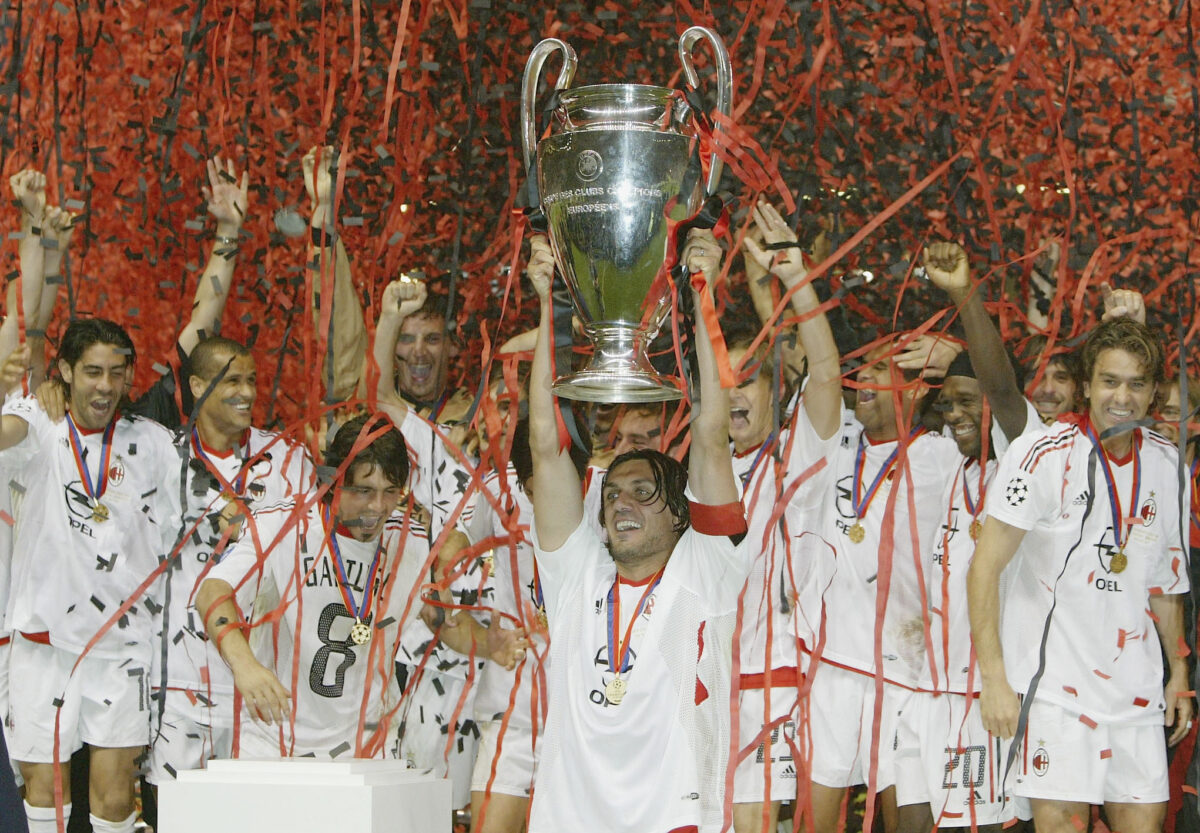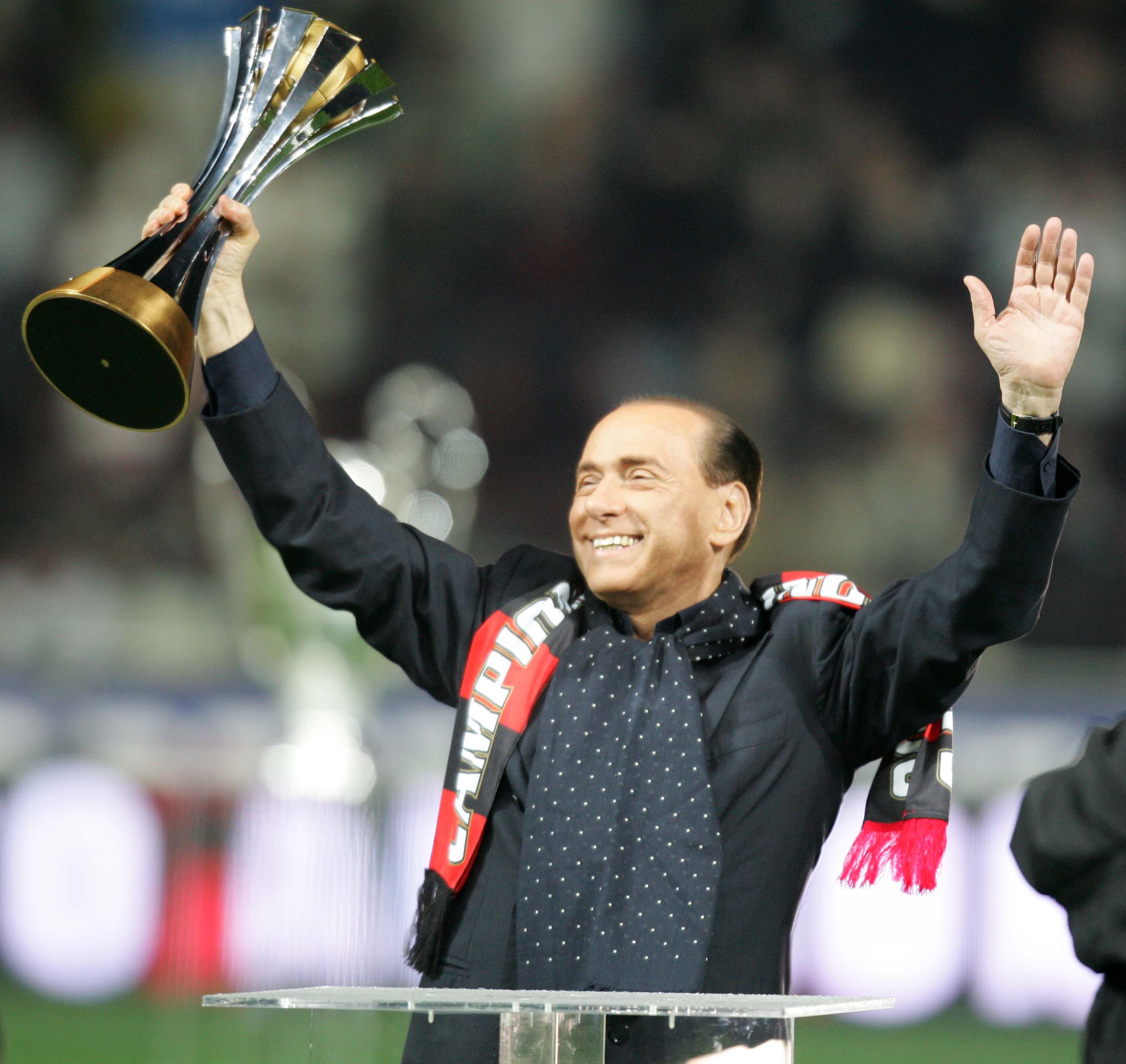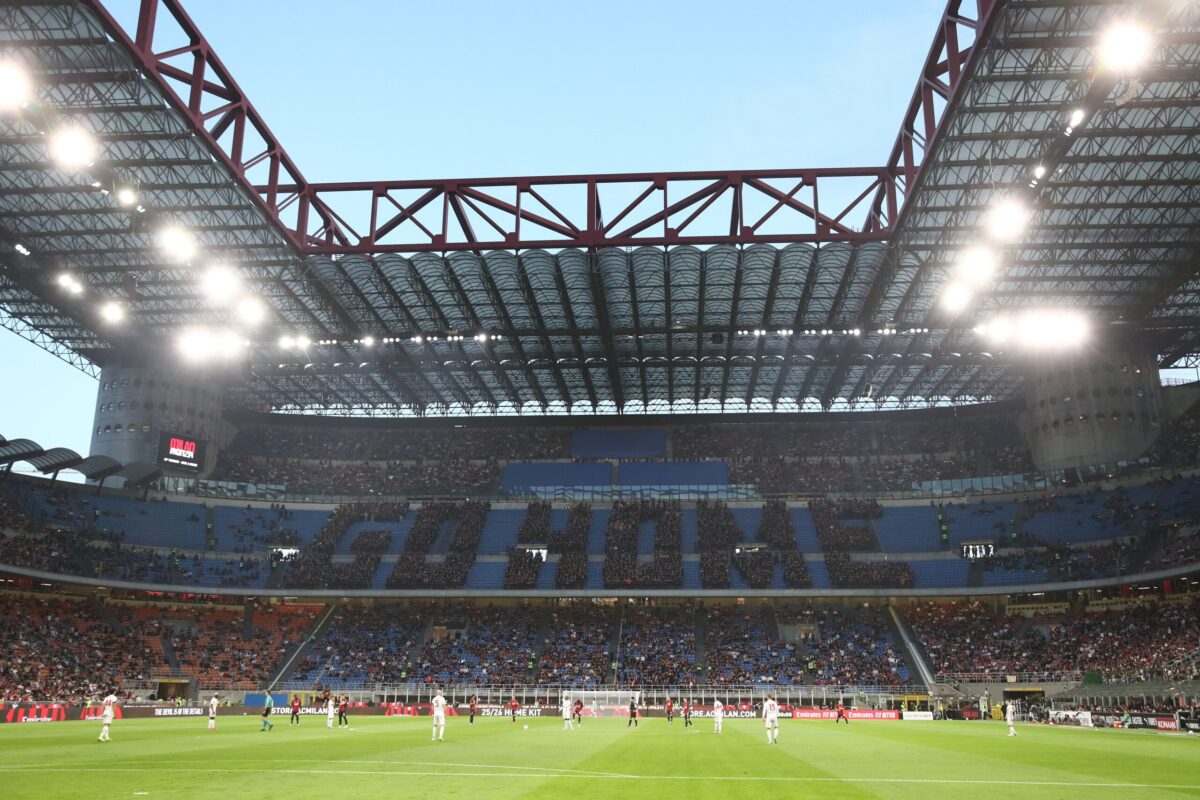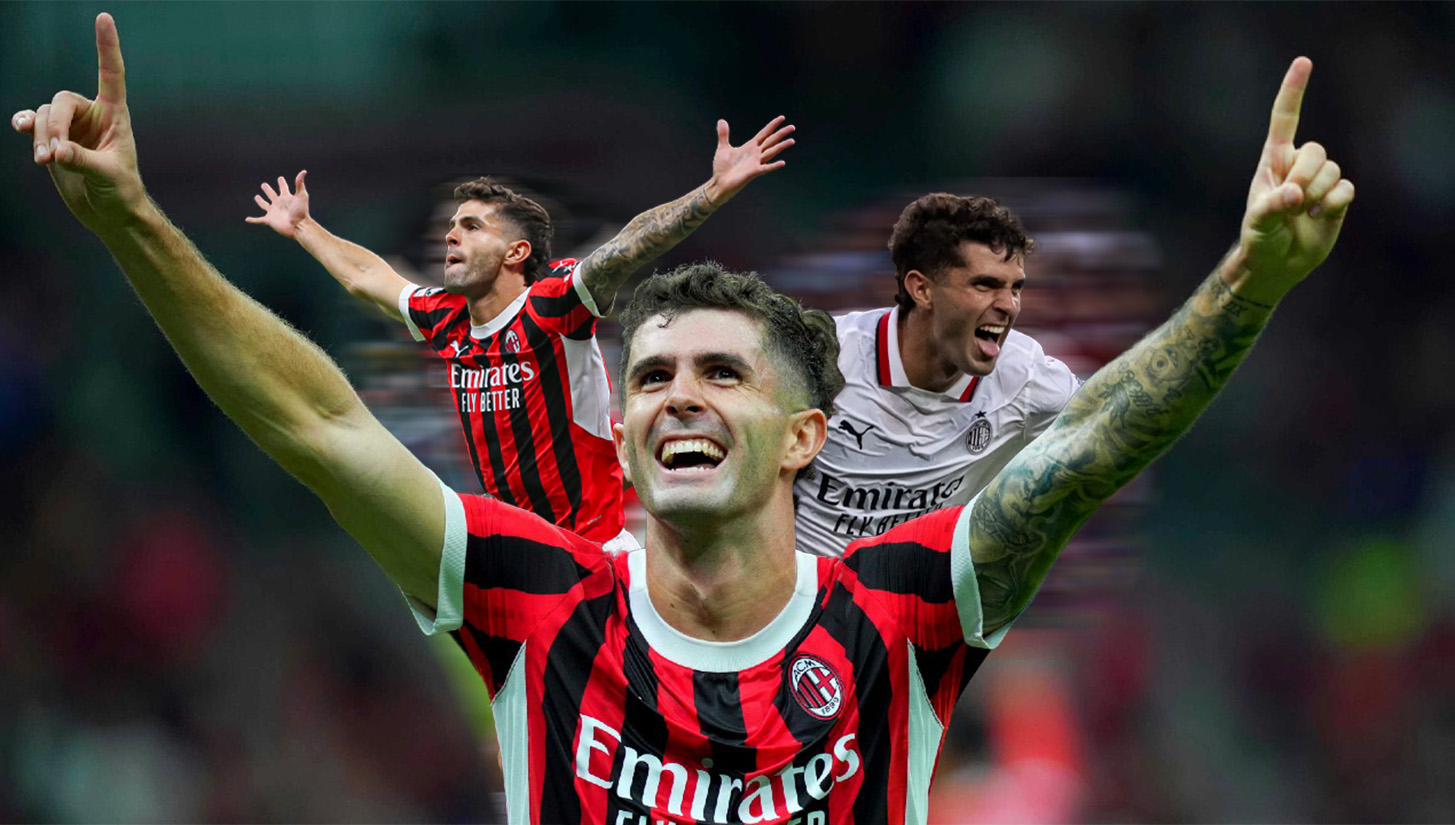AC Milan was once the gold standard in world football. What Real Madrid represents today, Milan was in the late ’80s and ’90s. But what was the most respected and feared club on the planet has since lost its direction and finds itself in a state of disarray, both on and off the pitch.
The name AC Milan once carried immense weight in global football. Their iconic red and black Lotto kits, adorned with the Opel logo, were a symbol of dominance and elegance in the 1990s. A 19-time Serie A champion, Milan’s all-time roster reads like a footballing hall of fame, especially from the late ’80s and early ’90s: Paolo Maldini, Franco Baresi, Ruud Gullit, Marco van Basten, Frank Rijkaard, Marcel Desailly, George Weah, Roberto Donadoni, Dejan Savićević, Roberto Baggio, and Cafu, among others.

But one figure looms larger than them all — Silvio Berlusconi. Much like Vito Corleone’s shadow over the Godfather saga, Berlusconi’s influence continues to haunt and define the club.
Berlusconi took over in 1986 when Milan was financially crippled and struggling in Serie A, just a few years removed from relegation. With deep pockets and grand ambitions, Berlusconi invested in top-tier talent and bold managerial choices like Arrigo Sacchi and Fabio Capello. Under his stewardship, Milan revolutionized their playing style — fearless, aggressive, and elegant. The trophies soon followed: 29 major titles, including eight Serie A crowns, five UEFA Champions League wins, five UEFA Super Cups, a Coppa Italia, seven Supercoppa Italianas, and three Intercontinental/Club World Cups.
Yet Berlusconi’s real legacy went beyond the silverware. He transformed Milan into a global brand and cultivated a footballing philosophy rooted in style, dominance, and spectacle. His reign set a high benchmark that modern ownership has struggled to meet.

When Berlusconi sold the club in October 2016 to Sino-Europe Sports, led by Li Yonghong, fans hoped for a renaissance. Milan’s performances had started to dip, and a change at the top seemed like the reset the club needed.
But the resurgence never came, and Milan stumbled financially under Li’s ownership. The takeover was fueled by heavy debt, and repayment obligations quickly became unsustainable.
This financial instability led to the club falling under the control of Elliott Management in 2018, after Li missed a €32 million loan payment and failed to refinance the money he had borrowed from the American hedge fund. Although on-field performances began to stabilize, the Elliott era was marked by ongoing financial turbulence and a lack of a clear, unified sporting vision.
Enter RedBird Capital Partners: A Costly Misunderstanding of Milan’s DNA

In 2022, RedBird Capital Partners completed a €1.2 billion acquisition of the club, taking over from Elliott Management. The deal included a strategic alliance with Yankee Global Enterprises, the parent company of the New York Yankees, who acquired a minority stake — signaling big plans for Milan’s global growth.
However, the new ownership has drawn sharp criticism from fans. Protests have erupted over poor communication, minimal infrastructure investment, and an unclear long-term plan. Supporters are concerned that RedBird doesn’t grasp the traditions and identity that define AC Milan.
The tension reached a boiling point in June 2023 when club legend Paolo Maldini was dismissed as technical director. Maldini had played a key role in Milan’s return to relevance, most notably with the 2022 Serie A title and consistent top-four finishes. His departure, reportedly due to strategic disagreements with owner Gerry Cardinale and CEO Giorgio Furlani, stunned fans. Maldini had pushed for more control over football decisions and criticized the lack of transfer investment — especially after Milan’s Champions League elimination at the hands of Inter.
The split was messy, with insiders pointing to conflicts over coaching staff, player acquisitions, and future planning. In place of Maldini, the club adopted a data-driven, streamlined model, one that sidelined the intuition and legacy knowledge that Maldini brought to the table. Fans and pundits saw his removal as a betrayal of Milan’s heritage.
Superficial Changes and Substandard Appointments

Following Maldini’s exit, Milan entered a new chapter with Zlatan Ibrahimović taking on a senior advisory role. While the announcement sparked headlines, many questioned the move — can a famously self-centered figure like Ibrahimović genuinely lead a team-building project?
Though frequently seen in the stands, his role remains vague, with many assuming it’s largely symbolic, a branding move more than a meaningful sporting appointment.
Then came the unexpected hiring of Jovan Kirovski to lead Milan Futuro, the club’s youth development project. Kirovski is a relatively obscure American figure in European football and a former United States men’s national team striker. A journeyman through his career, Kirovski was the technical director of LA Galaxy prior to his appointment in Milan.
The results were disastrous. The newly launched U-23 team was relegated to Serie D, a humiliating failure for a club of Milan’s stature. Despite this, Kirovski remains in position, raising eyebrows about the leadership’s commitment to quality.
Pulisic Shines While Milan Stumbles

On the field, Christian Pulisic has emerged as one of the few bright spots. But his individual brilliance couldn’t mask the club’s broader collapse.
Last season was a trainwreck. Paulo Fonseca was dismissed midway through a disappointing campaign, though his replacement, Sérgio Conceição, did little to revive Milan’s form. While the team beat Inter Milan and lifted the Supercoppa Italiana, Milan were plagued by inconsistency. A final record of 16-10-5 saw the club finish eighth — its worst Serie A finish in 10 years. Milan will miss out on European competition entirely next season, falling one place short of a Conference League qualification spot.
2024-25 was the first full season without Maldini in charge, and it ended with angry fan protests and reports of key players considering transfers.
Allegri Returns, but Questions Remain
Massimiliano Allegri has returned for a second stint as Milan manager, and will look to replicate his immediate success from his first time around, where he delivered a Serie A title and Supercoppa in his first season at the Rossoneri helm. Yet over his four-season run, those were his only major triumphs. His most recent spell at Juventus also ended in disappointment, raising concerns about whether he’s the right man to guide Milan forward.
With rumors swirling about potential exits for Rafael Leão, Tijjani Reijnders, and Théo Hernandez, the club appears headed into a transition year. Much of the leadership burden may now fall on Pulisic, who has scored 32 goals in 100 appearances and may be forced into a role he never sought.
A proven striker is desperately needed. Santiago Giménez is there now — but many question if he’s the right man for the job, especially when next season is Serie A or bust for AC Milan.
Right now, AC Milan is a club adrift. Its rich history and passionate global fanbase remain, but its current leadership seems disconnected from what once made the Rossoneri the best in the world.









I always find these analyses somewhat simplistic, especially when they want to start with the Silvio Berlusconi ownership. This one in particular makes a few mistakes and oversights.
Berlusconi bought at AC Milan which was undergoing a rough patch, that much is sure, but it can’t be stressed enough how much this rough patch was understood to be a social and cultural anomaly at the time: He nonetheless bought a club that was a ten-time Serie A winner and the first Italian club to have won the Champions Cup. Even during the stints in the Serie B, AC Milan’s match-day and sponsorship revenues continued to be among the most lucrative in Italy. What I mean to say by this is that AC Milan was already a sporting, cultural, and economic behemoth before Berlusconi, and this was made possible thanks to the support of the fans, a steadfast and (mostly) welcoming community which saw the club as an identitarian symbol of the working-class on which Italy’s modern prosperity had been built. Much can be said of Berlusconi’s ownership, what is was, what it wasn’t, but it is important to point our that fans didn’t always see eye-to-eye with the chairman in spite of the successes he brought, with influential fan groups outright opposing him at various points.
The article goes on to attribute AC Milan’s sporting decline to the sale of the club to Li Yonghong in 2016. However, AC Milan had already spent several seasons mired in mid-table by then. We don’t know precisely when Berlusconi grew unable or unwilling to support the club (there is an interpretation whereby Berlusconi moved to an opportunity-first management of the club as early as the late 90s) but a significant watermark is the 2007 the victory in the Champion’s League which was achieved with the oldest-ever roster to have won the competition, and in the years afterwards key players were allowed to age out of the squad with unclear and/or ineffective plans to replace them.
The article also says that the Elliott Management (which I assume refers to Elliott Investment Management) went on to purchase the club in 2018. This is incorrect, as the club was not purchased, but rather repossessed from Li Yonghong who was either not as solvent or as wealthy as he had led to believe and had borrowed substantial amounts of money from Elliott to cover operating expenses (the current management recalls as much in the controversial Harvard Business Review case study released a few months ago).
The part of the article on RedBird’s ownership, including reactions and unclear motivations for Maldini’s dismissal, is largely accurate. It would be a lengthy project to every single one of the club’s current management’s errors, but what I think is most difficult for the fans to digest is the management’s communication style whereby they will be largely absent save for occasional appearances before kick-off to make grand proclamations that seem increasingly disconnected from reality as results turned sour over the course of the season, and invariably leave the manager by himself in the post match press conference to face the media on his own (to the extent that the manager Paulo Fonesca learned of his dismissal from the press during the postgame press conference, as his replacement’s agent had already released a statement before the club).
First of all, Yuri, thank you! We’ve updated the part about Li Yonghong failing to pay. We’re all human, and mistakes happen.
Regarding AC Milan’s history before Berlusconi, yes—Milan has pretty much always been a big club. That goes without saying. But diving too deeply into that would have taken the article off course. The point we’re making is that since Berlusconi, the club’s owners or handlers haven’t quite gotten AC Milan and it’s proud culture. That’s why we focus on where the club was by the end of it’s hey-day.
Doing a deep exposition on who Milan were from day one would have been a bit too much for this piece. We’re kind of like George Lucas—we skip the exposition and get straight to the action. LOL 🙂